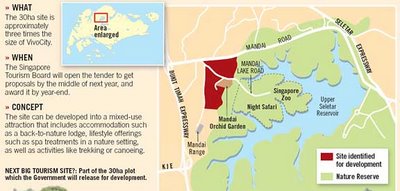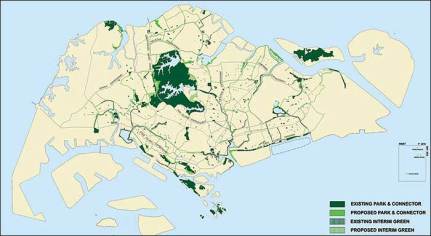With sun overhead and air crackling dry, we slipped past the giant gates at Tyersall Avenue, entering a mysterious leaf-strewn path leading seemingly to nowhere.
We walked for ten minutes along the longest driveway we had ever come across, and stumbled upon what we would later find out to be Istana Woodneuk, an uninhabited palace of genuine intrigue – and a powerful metaphor for the green awakening of Singapore.
The palatial house – once home to the Sultan of Johor – lies between popular nightspot Dempsey Road and the iconic Botanic Gardens, but remains secret behind Napier Road’s forested wall. In its prime it was reputed to stretch 60 metres long and rise 50 metres tall, house 420 doors, and boast a carriage porch, grand staircase and ballroom. We saw it however in half its glory, as the bulldozers razed it for a yet-unknown development.
It was our first field trip, almost a year ago. Over this time, we found Singapore’s natural heritage being lost everyday to new development, much like half-demolished Istana Woodneuk. Since our colonial days, governments past and present have dissected and reclaimed our forest reserves and coasts, but in the name of wonderful economic progression: the razing of 95 percent of our original forest cover and the adding of 20 percent in land area by reclamation since 1960 matches a 68 fold increase in GDP, putting this country’s residents up among the world’s richest.
Still, like the serendipity of discovering Istana Woodneuk’s ageing resplendence, we found solace in lesser-known nature areas still teeming with flora and fauna. Rescuing a fishing net-entangled horseshoe crab on Sentosa, and discovering ‘European’ valleys in Alexandra Park stand out.
We were cheered that in this shopping mall-obsessed land, spaces for the soul survive. In meeting ‘greenies’ and government officials who have made preserving our biodiversity their labour of love, we were reminded of the ancient saying that nobody ever owns land, but that one generation merely inherits it to pass it on to the next.
Making our rounds, we delved into Singapore’s history. Istana Woodneuk told splendid pre-colonial tales; our green spaces reveal similar stories. We learned about the British impact on our forests, the beginnings of our Garden City, and a green awakening at Chek Jawa. It taught us where we came from, and who we are – a struggling migrant population that has had to carve an economy and a home from our tiny island, then green the ugly grey areas, and finally preserve biodiversity in and of itself.
But as Istana Woodneuk hides in Tyersall’s forest, many Singaporeans similarly put nature away, preferring to cozy in air-conditioned apartments and leave land management to the government. Over this one year, we realised that we risk much if we ignore the urbanisation-nature conservation issue.
For it will determine how we, and indeed our children, will live life. We need to face up to how over-urbanisation degrades health – look at over-crowded Hong Kong to know why. Yet leaving too much green space underutilised limits economic growth, lowering the quality of life. What is the right balance? The only answer we got was the realisation that every one of us will need our own green awakening to come together to build our own future.
The issues extend beyond environment, health and wealth. The outcome of this green awakening will tell the world whether we as a country can develop sustainably: it will define our very identity.




